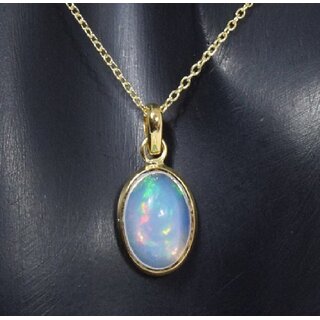
Opal Natural Energized Certified Bronze Opal pendant silver plated
Quick Overview
Opel stone, also known as Opal, is a mesmerizing gemstone renowned for its captivating play of colors. It belongs to the mineral group called silicates and is primarily composed of hydrated silica. Opal is distinct due to its unique optical properties, displaying a dazzling array of iridescent hues that change when viewed from different angles.
The color play in Opal is caused by the diffraction of light as it passes through the microscopic silica spheres within the gemstone. This phenomenon gives rise to a remarkable display of colors, including vibrant reds, oranges, yellows, greens, blues, and purples. The specific colors and patterns seen in Opal can vary greatly, making each stone truly unique and one-of-a-kind.
Opal is typically translucent to opaque, with a vitreous or waxy luster. It has a hardness of around 5.5 to 6.5 on the Mohs scale, which makes it relatively soft compared to other gemstones. Opal's relatively low hardness makes it more prone to scratching and requires careful handling and protection to maintain its beauty.
Opal is found in various locations around the world, including Australia, Ethiopia, Brazil, Mexico, and the United States. Each location produces Opals with distinct characteristics, such as the famous black Opals from Lightning Ridge, Australia, known for their intense play of colors against a dark background.
Opal has been prized for centuries for its enchanting appearance and has a rich history in many cultures. It is often associated with properties such as inspiration, creativity, and emotional healing. Opal is commonly used in jewelry, including rings, earrings, necklaces, and pendants, where its captivating colors can be showcased and admired.
When purchasing Opal, it is important to consider factors such as the intensity and distribution of colors, clarity, and overall quality. Opals with a strong play of colors and minimal inclusions are typically more valuable. Additionally, due to its delicate nature, Opal requires proper care to prevent damage and should be protected from harsh chemicals, extreme temperature changes, and physical impacts.
